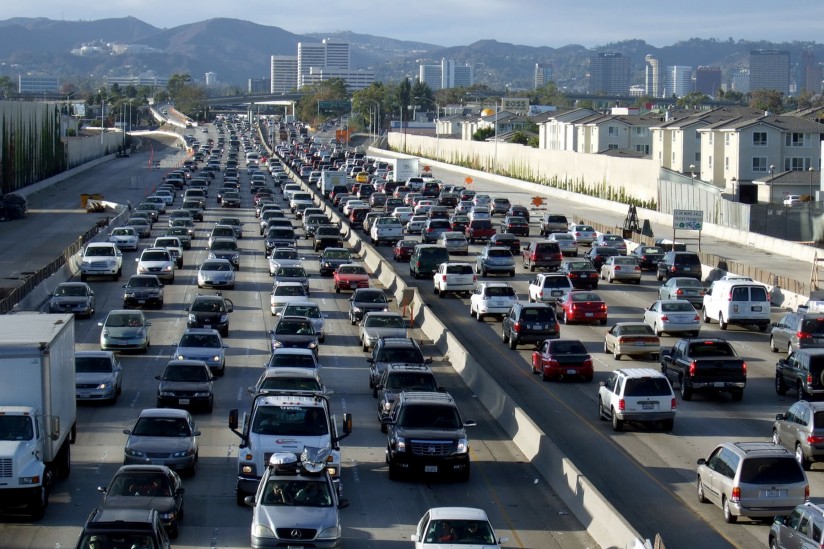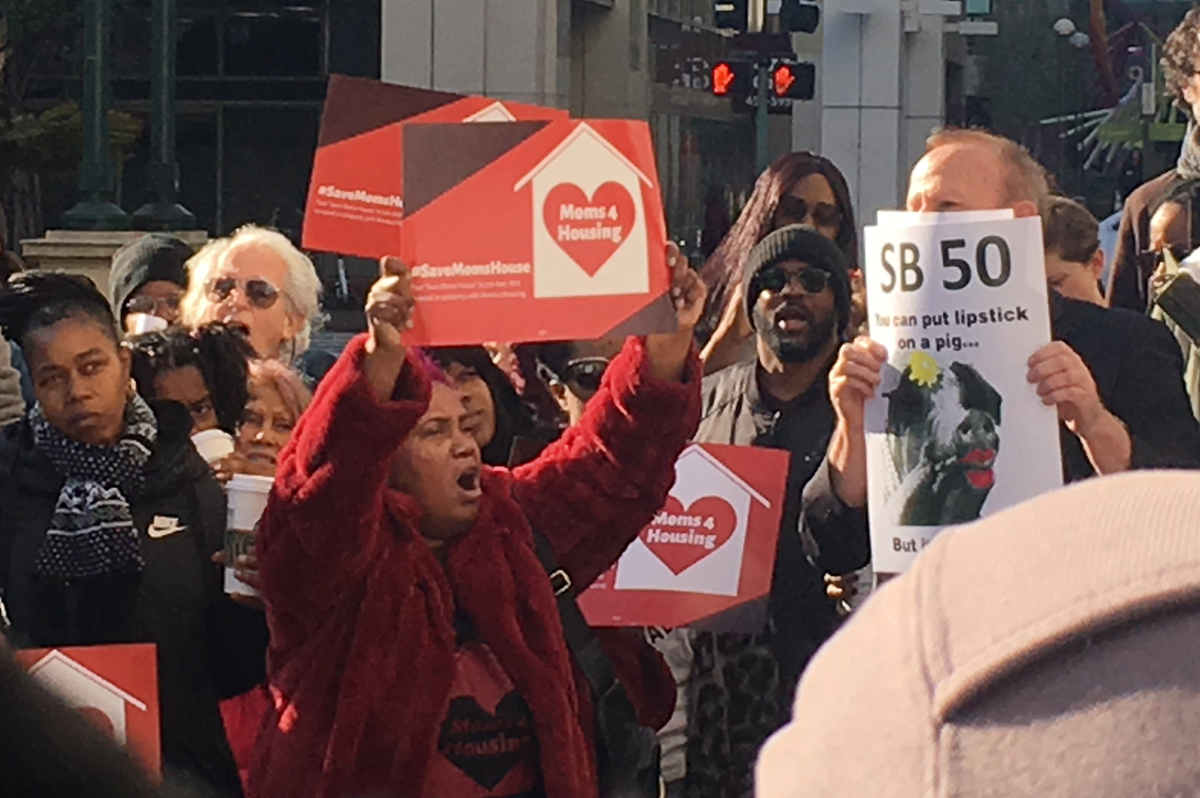
Housing and Transportation: Why California’s Legislature Gets EVERYTHING Wrong
Politicians don’t have to buy homes at today’s prices, and don’t have to drive during rush hours
By Edward Ring, May 1, 2019 2:30 am
California, the welcoming sanctuary state, has a population on track to break 40 million by the end of this year. Its highway system was designed to handle a population of 20 million. Its cities, bound by legislated “urban containment,” are 3.5 million homes short of what would meet current housing needs. As a result, commuters spend hours stuck in traffic, and millions of homeowners endure indentured servitude to mortgages on ridiculously overpriced homes.
None of this had to happen.
California is only five percent urbanized
There are many reasons it has come to this, but two causes stand out, because if they were corrected, the problems would be solved in a few years. The first is obvious but very tough to counter – there is a conventional wisdom that most of these damaging policies are necessary to save the planet. But upon examination, almost none of the ones with the worst consequences for housing and transportation were environmentally necessary.
With respect to housing, the environmentalist boogeyman was alleged “sprawl.” But California is a vast, spacious state at 163,696 square miles, including tens of thousands of square miles of semi-arid wasteland that could easily be brought to life if used for housing. California is only five percent urbanized.
If that allocation were just increased by half, to a mere 7.5 percent urbanized, ten million new residents could live in new homes on half-acre lots. It is absurd to think there isn’t enough land in California to accommodate this sort of development, which, in any case, would never be that expansive.
The problem with urban containment policies, set to get worse with the likely passage of SB 50, is the lack of balance. Increasing housing density in the urban core of cities is normal and inevitable. It is part of the natural evolution of all cities. But doing that without also permitting the outer footprint of cities to expand is destructive. Population growth that the urban core can’t absorb overflows into tranquil residential neighborhoods and destroys them. It ruins established low density communities, making them fodder for predatory investors and government rehousing schemes.
Environmentalists counter that housing must be near the jobs, and jobs must be near the housing. Notwithstanding the historical amnesia that must be making them unaware of how jobs and housing naturally flow to wherever new land development occurs, these objections ignore the future of transportation. There is no transportation conveyance more versatile than wheeled vehicles, no transportation conduit more versatile than roads.
What are quaintly still referred to as “cars” are on the brink of stupefying transformations. Vehicles over the next few decades will evolve to drive themselves, “convoy” in “hyperlanes” at very high speeds, operate as on-demand shared vehicles, public and private mini buses and full size busses; some of them will be mobile offices, conference rooms and hotel rooms; some of them will even fly. There is monumental folly in allocating funds for light rail and high speed rail, when the car of 2050 will be as dissimilar to the car of 1950 as an eagle is to a fruit fly.
There are other arguments for roads over rail. The supposedly lighter environmental footprint of rail is overstated, since it has to exist as an entire parallel transportation network that still requires cars and roads for anyone to get to the rail stops, or get to their destinations after they disembark. And the supposedly heavier environmental footprint of cars diminishes every year, as we enter the electric age, as cars become far more energy efficient, as their AI facilitates heavier road density at speed, and as more people share them.
As for other enabling infrastructure, it’s time that anyone willing to challenge the environmentalist fallacies that preclude development of civil assets such as roads, water projects, and nuclear power plants also challenge the supposed financial obstacles. One of the primary reasons California doesn’t have billions each year to spend on infrastructure is because, statewide, they’re pouring over $30 billion each year into state/local public employee pension funds – an amount set to double by 2025. Then, of the nearly $800 billion that California’s 83 state/local pension funds have invested, less than 10 percent is invested in California. Require 10 percent to go into public/private revenue bonds to finance infrastructure. Problem solved, assuming the money could be spent on bulldozers instead of bureaucrats.
There’s another cause for California’s failure to build homes and roads, however, one that’s rather elusive but even more fundamental. California’s liberal elites, nearly all of them aging boomers, are immune from the consequences of their voting patterns. These liberal voters never saw a piece of environmentalist legislation they didn’t like. Meanwhile, they’re all living in the homes they purchased well before the politicians they supported passed all those fine sounding, high minded laws.
This liberal immunity is challenged by SB 50, a law that threatens to fill wealthy liberal enclaves from Palo Alto to Brentwood with fourplexes filled with Central American migrants, living on public assistance. The horror! But don’t hold your breath. If SB 50 and similar legislation passes, those fourplexes will indeed be coming to a detached, single family home neighborhood near you, but they’ll skip the zip codes where the residents can afford attorneys. Why bother, when just up the road there’s a nice lower middle class block we can bust?
One cannot stop wealthy liberals from hiring lawyers to stop in its tracks anything they love conceptually enough to vote for, but not enough to suffer personally. But there is something that can be done. Repeal Prop. 13. Make every homeowner in California pay property taxes based on the current assessed value of their homes. That’s never going to happen, thank God. But the reason it will never happen is not what you might expect. The reason is because Democrats know that if they ever overreached that much, they would turn millions of voters into Republicans overnight.
The bigger shame is that the only reason these liberals aren’t conservatives is because they don’t have to live with the consequences of liberalism. They don’t have to buy homes at today’s prices, and as retirees, they don’t have to drive during rush hours. If they did, they might think more carefully about where their money is going, and they might question more urgently the environmentalist moralizing that served as the pretext for wasting so much of it.
- Ringside: Will Advocates for More Water Supply Projects Find Unity? - December 11, 2025
- Ringside: EVs and California’s Future Demand for Electricity - December 4, 2025
- Ringside: Politically Viable Water Supply Projects - November 27, 2025





Ed Ring for CA Governor….